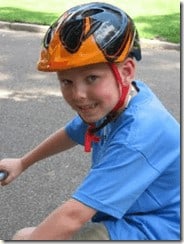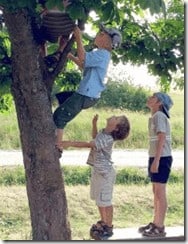 Every parent has had the sickening feeling when their baby or toddler falls and bumps their head. That slight pause before the screams of pain seems like the longest few seconds ever, there is a relief when the screams come because this means they are alert and conscious.
Every parent has had the sickening feeling when their baby or toddler falls and bumps their head. That slight pause before the screams of pain seems like the longest few seconds ever, there is a relief when the screams come because this means they are alert and conscious.
A concussion was always thought of as a trauma to the brain as a result of being knocked on conscious but this isn’t always the case.
The word concussion comes from the Latin word “concutere” which means to shake violently. A concussion occurs when the head is moved rapidly in one direction and then the other. For instance, a bump on the head causes a sudden stop and whiplash causes the head to whip backwards or forwards, both of these can produce a concussion. This sudden shift in direction causes the brain to move slightly within the skull. This small movement disrupts a portion of the brain called the Reticular Activating System (RAS) which is responsible for consciousness, alertness and filtering out irrelevant stimuli. When a person receives a concussion they usually exhibit signs of confusion and disorientation.
A concussion doesn’t always require emergency medical attention. When looking for concussion symptoms in a baby or child, you are looking for any changes in behaviour:
· Increased vomiting
· Irritability – more crying than usual
· Reduced coordination – observe your baby or toddler doing activities
· Drowsiness – sleepy and lethargic
· Confusion – Hard to spot in a baby but easier to assess in a toddler
· Dizziness – more noticeable in toddlers
If you can ask your child some simple questions, you can establish whether they are feeling any of the following symptoms:
· Headache or the feeling of pressure in his head
· Feeling dizzy or struggling to balance
· Feeling constantly tired or lethargic
· Blurry or double vision
· New sensitivity to bright lights and loud noises
· Numbness or tingling
· Feeling like everything is moving slowly or hazy
With concussions, some people display symptoms immediately and some people don’t display symptoms for a number of days. Following a bump on the head it is important to continue monitoring your child for 3-5 days. If no symptoms are displayed in this time you can assume your child does not have a concussion.
The majority of concussions do not require emergency medical attention but if you spot any of the following symptoms or a worsening of the following, contact medical personnel immediately:
· One Pupil larger than the other
· Severe drowsiness or cannot be woken
· A severe headache that cannot be controlled using Paracetamol
· Weakness or numbness and decreased coordination
· Repeated vomiting
· Slurred speech
· Convulsions or Seizures
· Difficulty recognising familiar people or things
· Increased confusion, restlessness or agitation
· Unusual behaviour or mental confusion
· Loss of consciousness
· Fluids coming from ears or nose
· Deafness is one or both ears
· Any changes in sleep pattern – difficulty getting to sleep, sleeping more than usual, difficulty waking
Concussions are scary but the treatment for a mild concussion is very basic:
· Ice the bump to relieve some pain
· Take Paracetamol to relieve the pain – avoid Ibuprofen and aspirin with all head injuries.
· Plenty of rest – try and encourage your child to sit calmly and avoid physical demanding or mentally demanding activities during his recovery
· Advise carers and teachers that your child has a concussion and what symptoms you are observing
· You can allow your child to sleep following a bump but wake them up at least once during the night – Any difficulty in waking you child should be discussed with a medical professional
Babies and children skulls are less developed than an adult skull so a bump that may seem quite small will still require monitoring. If the bump displays a bruise on your baby’s head larger than 2 inches, a medical professional may want to perform a CT scan to check for any damage.
 A concussion takes time to heal. It is important to allow the brain to rest after a minor trauma. Like any injury, the brain needs to remain as inactive as possible to allow this to happen. Minimal physical activity is recommended for the weeks following a concussion; this means no climbing trees for little boys, as a second bump on an already concussed brain can cause lasting damage.
A concussion takes time to heal. It is important to allow the brain to rest after a minor trauma. Like any injury, the brain needs to remain as inactive as possible to allow this to happen. Minimal physical activity is recommended for the weeks following a concussion; this means no climbing trees for little boys, as a second bump on an already concussed brain can cause lasting damage.
It is also recommended that you limit the amount of testing mental activities during the recovery time, such as reading or video games. The more rest you can allow the brain, the quicker the recovery time.
As a parent you know when your baby isn’t quite right, if you feel that something isn’t right, contact a medical professional for further advice on how to help your baby. It is always better to ask for advice rather than continue worrying.
Concussion symptoms are much more difficult to spot in a baby without the ability to ask even the simplest of questions. It is recommended that you take your baby to be assessed after a bump on the head. A qualified medical personal will be able to test for a concussion using the necessary tests.

